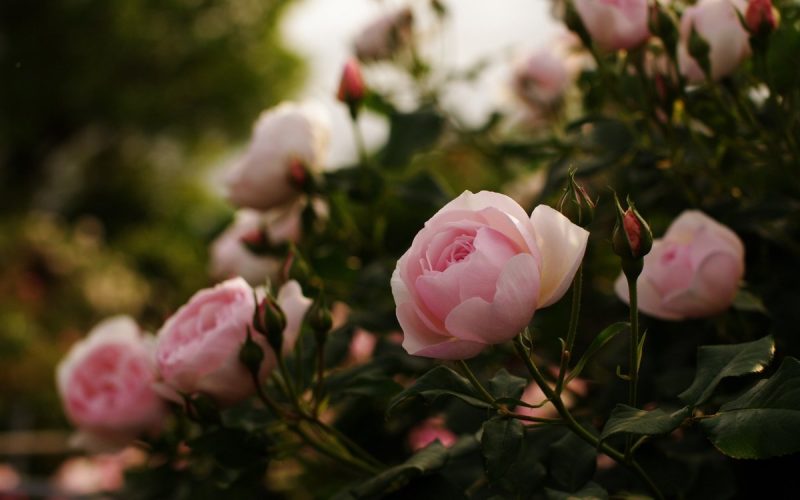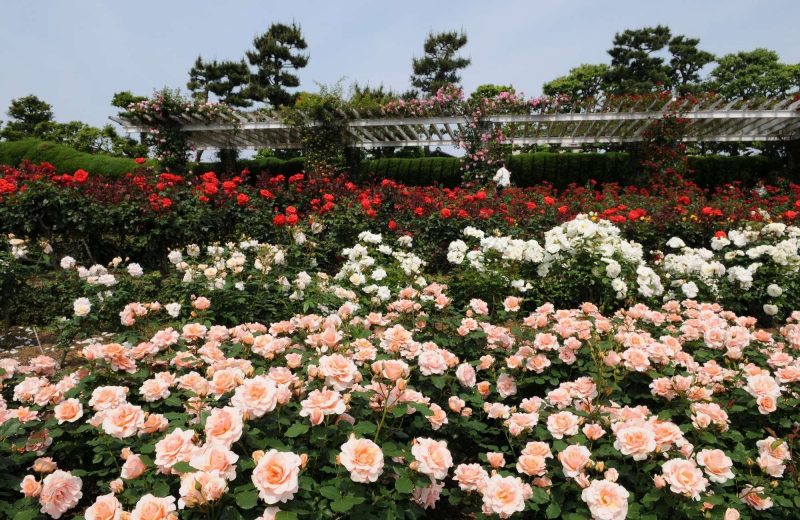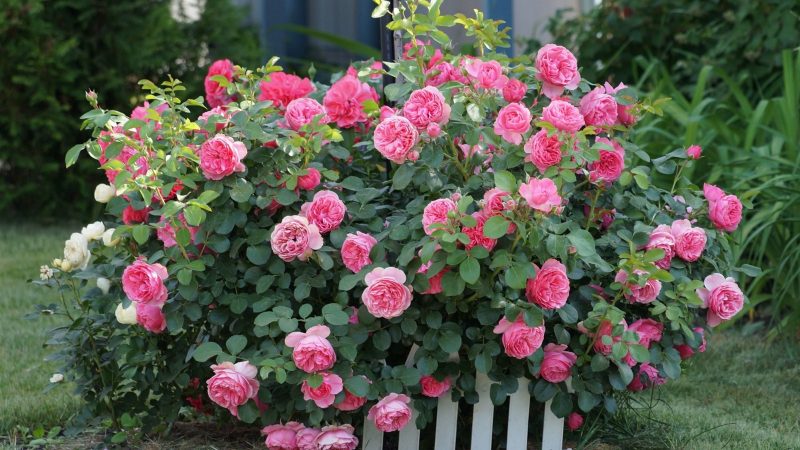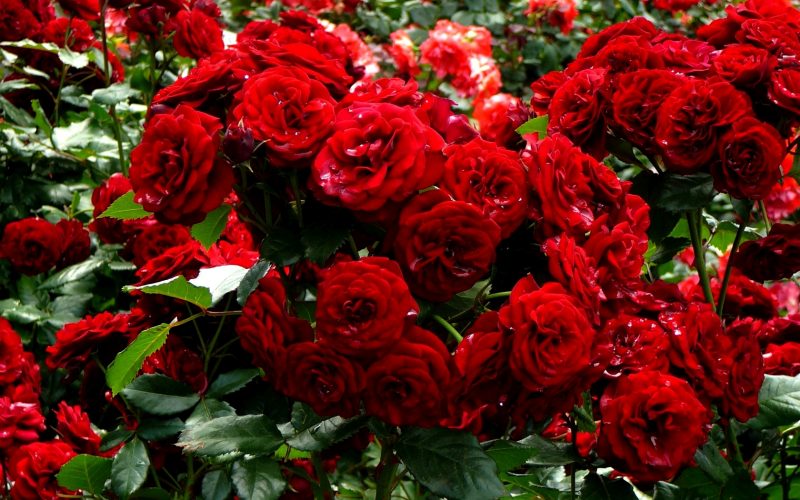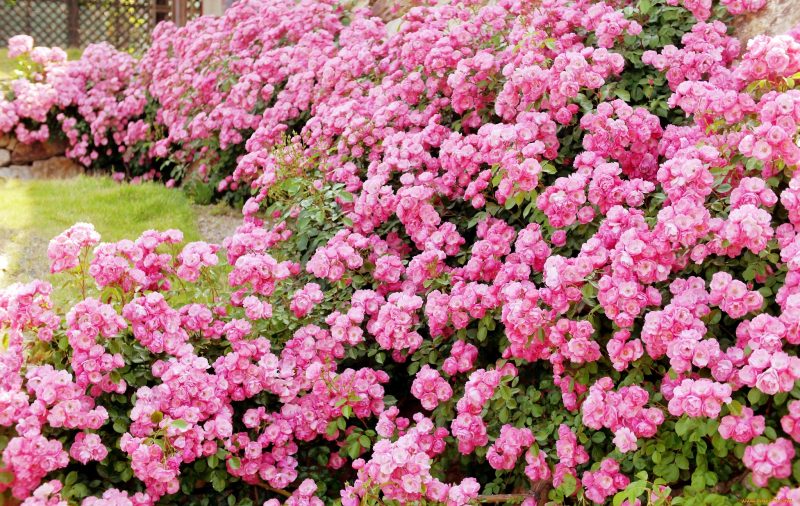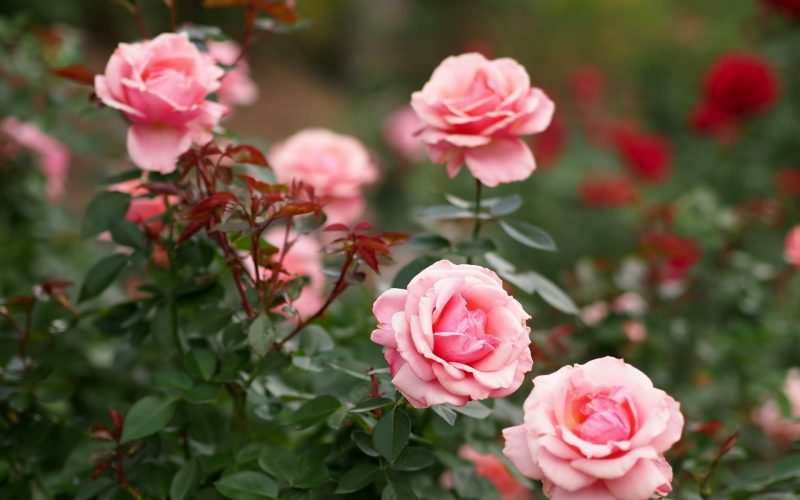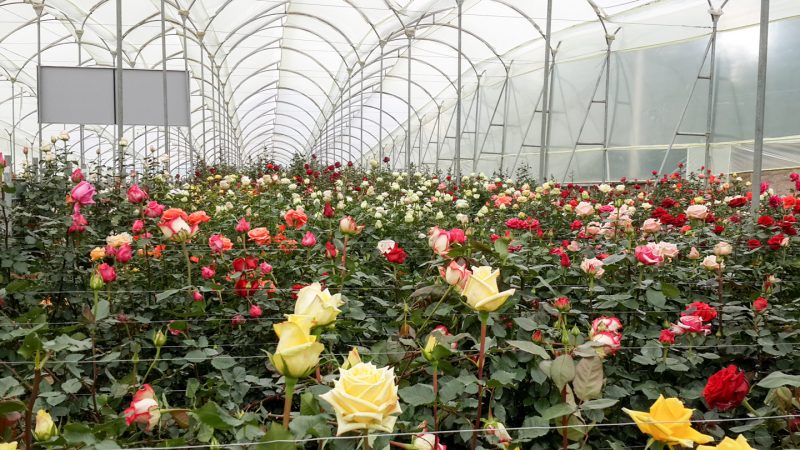Bush roses are represented by a large number of varieties and species. The group includes plants that are united by a certain form of structure, namely, a bush. However, they may differ in the color and shape of the inflorescences. This type of roses is suitable for decorating the flower garden and garden - using a variety of spray roses, you can create an original composition of plants on the site.
Material Content:
Description of popular varieties
Rosehip served as the material for creating spray roses. Crossing it with different species, we got new varieties. They differ in the height and shape of the bush, the number and size of flowers.
The family of spray roses is represented by the following species:
- English roses.
- French roses.
- Tea hybrid.
- Floribunda.
- Wicker.
English roses have a rich aroma. They are diverse in form - from a lush bush to a climbing vine. This is a universal view for the design of any garden, with a high resistance to disease. Such roses bloom twice a season.
Their popular varieties are:
- "Abraham Derby." Apricot pink flowers, delicate aroma.
- "Benjamin Britten." Flowers of red-orange color, pion-shaped. Very unpretentious variety, has good resistance to fungal diseases.
French roses are the most ancient representatives of culture. Compact spiky bushes tolerate frost and drought. They bloom for a short time, about a month. Among them, the most common are red bush roses. There are double and semi-double flowers.
Known varieties:
- Rosa galica. Wild garden flower with a strong aroma. Grows up to 1.5 m. Half-double red flowers.In autumn, berries are formed from them, like in a dog rose.
- Cardinal Richelieu. Spectacular terry rose with purple petals. Fragrant. Blooms 1 month. The bush is magnificent, but compact, has few thorns.
Hybrid tea roses are low bushes covered with large leaves. Bloom twice a season. The monthly flowering period is replaced by a pause, then flowering is repeated.
Popular varieties:
- Flamingo The 25 rose petals have the shape of a glass. Blooms on new summer shoots. Flowering is long. The aroma is weak.
- "Big Simple." It is strewn with double flowers up to 15 cm in diameter from 35 petals. It has a rich red color. Color twice a season.
Roses of floribunda are unpretentious and popular among gardeners. Bushes are low and neat. Medium-sized flowers are simple and double, form inflorescences. This is a type of white spray rose. It blooms for a long time. There is no aroma.
Popular varieties:
- "Lily Marlene." A low bush is strewn with white or red inflorescences. Color all summer. Afraid of only powdery mildew.
- "Niccolo Paganini." The flowers are created like red velvet. Form a brush of 12 fragrant buds. The bush is low, frost-resistant. The plant requires fertile soil for lush flowering.
Climbing bush roses form long shoots that require support. Among them, curly (branches 6–15 m long) and climbing roses (3.5–5 m) are distinguished. The most popular variety is "Excelsia", which grows very quickly to 4 m.
The flowers of the climbing rose are small, gathered in bouquets. They are simple or terry. The species forms red, pink and white inflorescences. It blooms all summer. Undemanding plant. It tolerates heat and frost, grows on poor soils.
Prerequisites for growing flowers
To get luxuriously flowering bushes, you need to know how to grow them, and create suitable conditions for growing bush roses.
How to choose the right site
For planting, choose an open place, lit by the sun for most of the day.
The climbing varieties can tolerate some shading, but not more than 3 to 4 hours per day. Neighborhood with tall trees is unacceptable - they will create a shadow and take away food.
The roots of roses do not tolerate excessive moisture, stagnation of moisture from rain and melting snow, close proximity of soil water. A good place will be a site with a slight slope to the south, then neither the rain nor the snow will disturb this delicate shrub.
Basic soil requirements
It is better to plant roses on light loam with low acidity - 6 - 6.5 pH. A drainage layer is required in the soil. The soil should be nutritious, enriched with compost and mineral fertilizers. This will provide a beautiful rose bloom.
Watering and feeding
In summer, roses are watered once a week, in hot weather - after 3 - 5 days. It is important to shed the soil layer to the depth of the roots. Use warm, soft water, carrying out the procedure in the evening.
An adult plant requires up to 10 liters of water. After watering, the soil is loosened and mulched. In autumn, roses are very rarely watered.
- In early spring, a complex fertilizer is introduced containing nitrogen, phosphorus and potassium in equal proportions.
- In the first part of the summer, nitrogen is required. This causes the development of shoots, an increase in the volume of the bush.
- During the formation of flower buds, roses need phosphorus and potassium. You can choose a ready-made complex for roses, in which the necessary components are balanced.
- During flowering, it is undesirable to make any additional fertilizing.
- Autumn mixtures consist of phosphorus and potassium in equal volumes. Organic formulations for roses are used with caution.
Planting bush roses in the open ground
For landing, make a hole about half a meter deep and the same diameter. The depth of the pit should correspond to the size of the root system or a lump of earth with roots. When planting, the vaccination point is buried by 4 cm.
A bush of roses with open roots before planting is placed in the water for several hours. Potted seedlings moisturize.The established seedling is watered with water, and after it is absorbed, they begin to fall asleep with soil. To do this, use garden soil enriched with compost (1 part to 3 parts of soil) and a handful of wood ash. The soil is compacted after planting, the sapling is spud.
Rose Care Features
An important feature of caring for roses is the correct and timely pruning. This operation should be performed in spring, summer and autumn.
- In the spring, before the buds open, the broken, dried and frozen parts of the bush must be removed. Thicken shoots are also removed. They leave strong mature branches that can bloom this season. They can be shortened to 3 kidneys. Be sure to cut wild shoots from grafted roses.
- In summer, the removal of blooming inflorescences is performed. This provokes the formation of new buds.
- In the fall, damaged and shrunken branches are cut out, flowers and immature green shoots are removed.
Climbing roses are susceptible to such diseases:
- powdery mildew;
- peronosporosis;
- rust, or chlorosis.
Fungal diseases are destroyed by vitriol - 3% solution, 1% colloidal sulfur solution or other fungicides containing copper.
Note. Chlorosis occurs when there is a lack of iron in the soil. After the addition of salts of this element, rust usually disappears.
Of the pests, aphids are dangerous. She is clinging to shoots and buds. A small amount of parasites is washed off simply with water or a solution of green soap, infusion of garlic. It is good to use the drug Fitoverm, Healthy Garden.
An important point in caring for bush roses is their preparation for wintering:
- Shrub roses, except for climbing, pruned.
- Spray bushes and soil around the Bordeaux mixture.
- Mulch the soil, then cover it with spruce branches, dry branches, non-woven material.
- For particularly valuable specimens, they make a frame shelter.
Methods of propagation of flowers
For bush roses, there are such methods of propagation: cuttings, dividing the bush, layering, offspring, grafting, seeds.
- Division of the bush is carried out on the eve of wintering, while the rose must be pruned. The dug bush is cut into several parts. Each plot should have a lobe of roots and one shoot. The method is suitable for propagating root roses.
- Cuttings cut into their lignified shoots after the beginning of flowering of the bush. The thickness of the handle is about 1 cm, the length is 8 cm. The upper cut is made just above the kidney, the lower one is directly below it. The stalk should have at least 2 buds and 2 leaf blades. Root them in a bed under a transparent shelter. It is important to maintain constant humidity under it.
- The seed method is not considered a good solution, since it does not allow you to save the distinguishing features of the parent variety.
How to grow bush roses in a greenhouse
Low-growing varieties are planted here for early cutting of flowers. A greenhouse for growing roses should be located in a sunny place. Agricultural technology differs little from usual, it is only important to create a microclimate suitable for roses. It will be convenient to drip water the plant, thanks to which the roots will receive the necessary moisture, and the air will remain dry enough.
For the quick appearance of flowers, additional illumination of daylight is used. Before flowering should be a lot of light. When the buds appear, the lighting is reduced so that they retain their decorative effect longer. The most convenient liquid top dressing, performed simultaneously with watering.
In the greenhouse, it is important to monitor the condition of rose bushes. The spider mite is especially dangerous, fungal diseases are possible. Their prevention is important, as well as the preliminary treatment of seedlings and the use of healthy planting material.
Growing roses in a greenhouse is a costly way, but it pays off if you grow roses for sale.
Among the most beautiful and unusual flowers, the rose always remains the queen. So that she does not lose her greatness, it is necessary to create certain conditions for her. Shrub roses are the most popular and suitable for decorating the garden, because most plants of this species are descended from wild ancestors.For their cultivation, you do not need to make special efforts, they will always delight the eye with a variety of colors and shapes.


